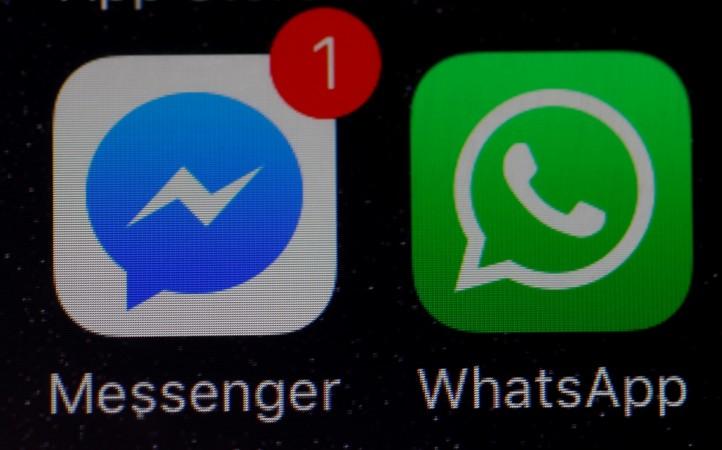
The Indian ingenuity in creating fake news is outshone only by the rush to unquestioningly share it on all social channels. What constitutes fake news is an evolving branch of media studies. The consensus so far is only that the term 'fake news' denotes a much vaster meaning complex than bad journalism.
Fake news is not just limited to doctored news articles, planted stories, embed journalism pieces, twisted arguments, edited quotes, propaganda masqueraded as news, fake videos and the like. They are all fake news but the ambit is wider. At the same time, all published lies do not qualify as fake news either. By consensus, a lie becomes fake news when it's picked up by news outlets, shared through social media channels and eventually reaches huge numbers of people.
Tonnes of image memes are created by people every day. Some gain virality. The latest example is the photoshopped image of a news headline that went viral on Friday. The Times of India headline that originally said 'Modi, Xi to meet 6 times in 24 hours' was doctored to read 'Modi, Xi to mate 6 times in 24 hours'. The potential mixing up of meet and mate is one of those atavistic fears of people in news trade. Like the other dangerous pair of public and pubic. But these mix-ups do happen. So if a photo of the news headline with 'mate' arrives in WhatsApp the general tendency is to believe that it really did happen.
A photoshopped image of our headline on the Modi-Xi meet is doing the rounds. All our editions carry the correct headline. You can see the difference when the correct & fake headlines are placed together. The one on the right is the photoshopped image with the word 'mate' tilted. pic.twitter.com/76NZGuFpR1
— Times of India (@timesofindia) April 27, 2018
The only difference is that it was not the case. It was a photoshopped image, the hoax busters found out soon. The newspaper also clarified with evidence that its editions had carried the right spelling. But journalists, editors, civil servants and astute social commentators had all gobbled up the lie by then. The simple meme had become a classic case of fake news in hours. The point is not about the gravity of the fake messages and their hurt value. It's about how the traditional definition of fake news is undergoing a metamorphosis.
Fake news is no longer limited to the outcome of the manipulations that happen in a newsroom. Nor the result of the machinations by Russians aided by the latest tech. It's much more than the bad journalism. It's not exclusive to the sinister, evil designs of vested interests. In our society, practically everyone falls for fake news. That's because social media channels, where the engagements take place, are nothing more than echo chambers. If you love Modi, you intuitively gravitate to believing everything pro-Modi and anti-Opposition. If you hate Modi, you tend to hit the share button on a fake news headline that passes for a Freudian slip-up.
A global study on fake news conducted by the Public Data Lab analyzed the demographics of the fake news consumers. The findings were revelatory. Those who are against corruption (that's pretty much everyone!), those for gun control, those against Trump, those who rant against mainstream media, those against Islam and the like. So everyone's willing to suspend disbelief and circulate a fake news artifact. That's what happened on Friday with the photoshopped ToI headline.
The result may not be as harmless always. Utterly objectionable, inflammatory messages and visuals can quickly become viral news. The social media ecosystem can throw nasty surprises. Hoax busters and mainstream news outlets that put a premium on accuracy already have a tough time setting the record straight.
Let's take just the recent example of the brutal rape of an 8-year-old in Kathua. Amid all mainstream reporting, tonnes of false messages, fake news, Facebook posts, tweets and WhatsApp forwards popped up even as the country was consumed by rage.
The following is a pick of fake news around this incident that gained wide currency among huge numbers of credulous news consumers: That the victim was not raped, that the rape accused was beaten up by women, that the rape accused was a Muslim man, that the victim was raped by Muslims and the body was thrown inside the temple, that minister Arun Jaitley said the rape incident cost billions in tourism revenue, that BJP leaders in a Mumbai train were asked to leave because there was a little girl on board and that there is a law now that allows women to kill rapists.
Sharing is new religion
Most of these fake/misleading bits of information were not published by news outlets or TV channels. Yet they were created, they reached people and they were taken for truth. So fake news is no longer only about poor judgment in the institution called the press. On the other hand the rampant rise of fake news signifies the retreat of the conventional news media from people's lives. Or in other words, the increasing irrelevance of conventional media, which used to write what was hailed as the first rough draft of history.
The unprecedented hate wave in Myanmar against the Rohingya Muslims in the last couple of years was attributed to the sudden access to internet and smart phones that the people got after decades of seclusion under the junta. The result was that in Myanmar, Facebook was the Internet. Anything that appeared on Facebook had automatic validation.
In India, WhatsApp is the internet for a vast chunk of the people with smartphones. And sharing is the new religion. Is this a passing phenomenon? It's comforting to believe so!
















